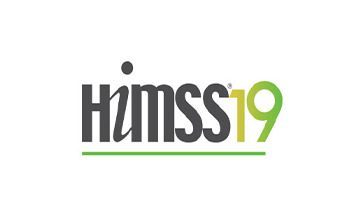Resources
Three Ways Clinical Surveillance is Helping Prevent Patient Care Problems
Clinical surveillance can help healthcare systems more quickly identify clinical care problems, such as those related to medication errors and poor usage of antibiotics. But it can also help healthcare systems prevent problems from occurring in the first place.
That’s according to Bart Abban, PhD, director of analytics and data science at VigiLanz, who spoke about predictive analytics and clinical surveillance at the recent HIMSS Conference in Orlando.
“We’ve fully integrated a machine-learning platform into our real-time system,” said Abban, during his presentation. “We can look forward [at potential events], look in real time, and look back at historical data. It’s a fully closed-loop.”
Firm foundation needed
Much of the foundation of predictive analytics, Abban noted, comes from creating rules and alerts based on historical data. “You need a data repository,” he said. “We have vast amount of rich data, years and years of data.”
To view Abban’s full presentation, click here.
Health systems have many predictive analytics solutions to choose from. But Abban said VigiLanz stands apart because it provides a broader spectrum of alerts and customizations related to all types of patient care problems.
“With our platform you can do readmissions today, tomorrow you can start looking at mortality risk, you can look at adverse events, glycemic control,” he said. “We are currently developing a model on C. diff to alert clinicians to patients who are at high risk of getting C. diff. The sky is the limit.”
For more on how health systems are using clinical surveillance to enhance patient care, read “Clinical Surveillance: The Next Step in Value-Based Care.”
Three applications
Abban shared three examples of how VigiLanz is providing predictive analytics to health systems:
- Sepsis
Since many hospitalized patients have symptoms that resemble sepsis, it can be difficult for providers to identify sepsis cases or identify patients who are most at risk. VigiLanz created a rules engine so that hospitals can use certain criterion—such as vital signs, labs, microbiology, comorbidities, and medications—to identify patients at risk. VigiLanz can then alert providers when patients are at risk, and providers can monitor these patients more closely and treat them proactively. Since data is updated in near real time, providers always have access to the most up-to-date information related to patients at risk.
- Acute kidney injury
Certain medications are essential for patients, but they can also lead to acute-kidney injury. The conventional approach is to monitor patients via labs, however, that means providers can only intervene after injury has already occurred. VigiLanz created a series of risk factors that can help providers more closely monitor patients, and proactively adjust medications as needed.
Risk factors include:
- High risk nephrotoxic medications
- Other drugs administered
- Age, race, chronic morbidities, ICU stay or surgery
- Specific labs
- Anomaly detection
VigiLanz created a rules-based engine to help health systems monitor the likelihood of a cluster or outbreak of hospital-acquired infections.. VigiLanz created alerts based on algorithms for various types of infections, and health systems are able to configure their own alert thresholds depending on their needs, areas of concern, and priorities.
Health systems using the VigiLanz platform to improve patient care and prevent patient care problems can rest assured that critical alerts won’t be missed by providers, said Abban. He noted that VigiLanz can track whether providers are taking actions related to the alerts they receive. If not, alerts can be reissued or the health system can follow up with providers directly. “It’s a whole ecosystem where you can extract the value of predictive analytics,” he said.
Unlocking Patient Safety: The Power of Autodetection in Healthcare
The key to preventing safety events and reducing harm is not about what you know is happening, but what you don’t know. Hear from Dr. Chris Emerson on how autodetection can help healthcare leaders gain visibility into the true state of patient safety inside their institutions.
Enhancing Patient Safety with Automated Event Detection: A Hospital’s Guide
Discover the benefits of autodetection, why every hospital should deploy it, and how one innovative health system is using it to enhance patient safety.
